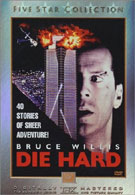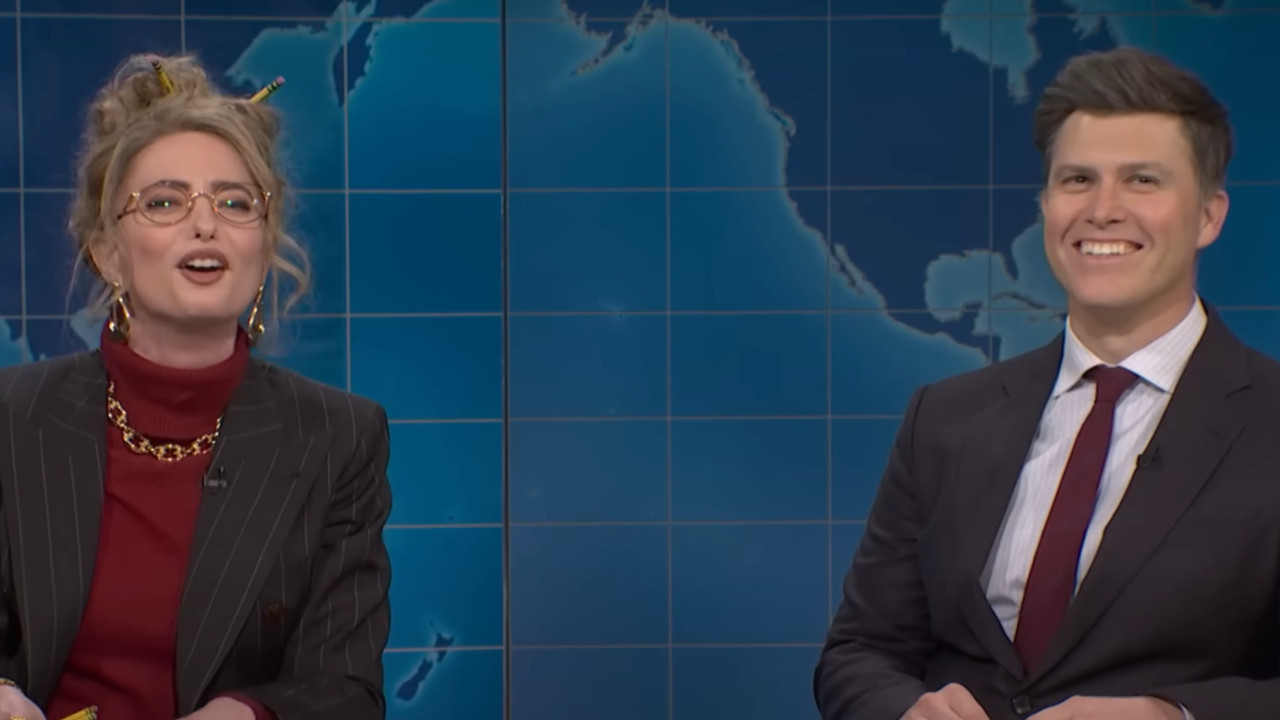By 1988, Arnold Schwarzenegger had already made Conan the Barbarian, The Terminator and Predator, while Sylvester Stallone had been known as Rambo and Cobra. The action genre was very much alive, but it took every day Joe, Bruce Willis, to shake the genre out of its hulking, one-man army complacency. With its trailers, Die Hard promised to “blow you through the back wall of the theater.” To this day, the film still blows us away with its charm and sensibilities. While women have their “chick flicks,” offering men who are emotionally supportive and know what to say and when to say it, Die Hard’s “guy pic” features a man who communicates poorly with his wife, pines over young, supple women, and fixes his marriage by killing lots of terrorists. Yet, the film manages to stifle its hokey action with the help of unsuspecting, “Moonlighting”-star Bruce Willis. Unlike Schwarzenegger or Stallone, who are more brawn than brains, Willis plays a New York cop who’s doing his best to stay alive.
Willis’ John McClane makes mistakes during his cat-and-mouse dealings with the terrorists, who crash an office Christmas party in a 40-story office building in hopes of pilfering millions of dollars. He nearly falls 30 stories in a ventilation shaft and he blows up an entire floor with too much C-4, but McClane is trying his best. What separates McClane from other action protagonists is his down-to-earth sensibilities. He’s a flawed man (perhaps too obviously) with relationship problems that most men can relate to, but being bad ass enough to take on a small army of terrorists makes him a masculinity role model.
However, the films success does not lie on the shoulder of one man, but of two: not only in Willis but also in Alan Rickman’s villain, Hans Gruber. Gruber is not the embodiment of some sort of evil ideal. In fact, Gruber is not all that threatening. Sure, he kills unarmed hostages in cold blood, but he also has good taste in suits. This offbeat villain is almost as likeable as McClane. When Gruber talks with a hostage about the hostage’s nice suit, there is a tone of admiration and camaraderie, which makes the later cliché threat of ruining the suit with the hostage’s brain matter seem actually menacing.
As McClane’s wife’s cleavage becomes more prevalent, more male psyches fill the fray. You have the clueless police chief, the supportive friend in Sgt. Al Powell (a.k.a. Carl Winslow - Reginald VelJohnson), the shoot-first-ask-questions-later F.B.I. agents, and the violence-minded terrorist. Yet, McClane is the only man who encompasses a portion of each male psyche. Luckily, all these psychological characterizations are masked by exciting action set pieces. From the rooftop explosion to glass office shootout, the action scenes are solid, no-frills shots that allow the action to happen, rather than try to create it with quick cuts and tight character shots.
In today’s computer-generated, effects-filled action movies, it’s refreshing to go back to Die Hard’s outstanding practical effects and character tension that only comes from solid writing. It’s rare that an action movie actually capitalizes on both – including both Die Hard 2 and Die Hard with a Vengeance. Odds are that the upcoming Live Free or Die Hard will have also forgotten Die Hard’s practical lessons of solid characterization and action. There’s nothing like an original. Thankfully, the two-disc, Five-Star Collection DVD from 20th Century Fox immortalizes the film on DVD. Compared to the specs of the latest set released, there's no sense in getting rid of this edition to pick up the shameless double dip. Unless, you really need some Live Free or Die Hard P.R. crap. In the original release, not only do we get the original theatrical cut, but there is an extended branching version that inserts the deleted “Cutting the Power” scene, which is mostly useless, but a nice addition.
The transfer is a solid 2.35 : 1 anamorphic widescreen transfer. The colors are solid and the contrast is nice and sharp. More often than not, there are film artifacts and visible debris to remind you that Die Hard was shot in the time of film, not the lush digital world we now inhabit.
Upping the ante is the audio, which is presented in a reference-quality 5.1 DTS sound track. The DTS tends to have a more full spectrum with solid highs and lows, where as the Dolby Digital 5.1 sound track tends to emphasis a bit more of the high end of the frequencies. A Dolby Surround soundtrack is available in both English and French, where as subtitles are presented in both English and Spanish.
Now for the disc’s meat and potatoes, there are three different commentaries for appetizers. The first is a track with director John McTiernan and production designer Jackson DeGovia. It’s a solid track that spends most of the time dealing with the film’s production. From DeGovia discussing the technology of the film’s design and McTiernan going on about the films pre- and post-production, it’s an exciting and informative track that offers a lot of audio action from DeGovia and McTiernan. Their knowledge of classic American cinema is also impressive as they relate it to the production of Die Hard
The second commentary is a scene-specific track with special effects supervisor Richard Edlund. The track offers a bit of insight into the effects dilemmas of a time before digital assistance. However, the commentary is a bit sparse which means there are often several minutes of commentary silence – just enough for you to forget you’re listening to a commentary track when a voice finally chimes in.
The Third commentary is a text subtitle track that is much more enjoyable than you would expect. Little things such as pointing out Hans Gruber’s tells or the fact that McClane spends the first third of the film running around trying to call for help, as oppose to kicking terrorist ass.
That’s just the end of Disc 1. Disc 2 opens up a whole new world of behind-the-scenes Die Hard. Perhaps the most important feature is the “Why Letterbox?” featurette in The Cutting Room section. This is a visual representation of what happens when you cut a wide-screen film to fit a 4:3 T.V. with pan and scan. Granted, this point is rather moot as everyone has nearly accepted widescreen as the preferred video transfer. In the early days of DVD, there was much resistance to widescreen, as the “black bars” seemed to shorten the viewing space. But this feature shows you how full-frame transfers destroys the visual filmmaking.
Also in the Cutting Room are three editable scenes. All three offer eight shots from different perspectives for you to slice and dice into your own scene and compare it to the one from the film. It’s a fun little tool that helps show the importance and power of editing in a film.
Speaking of the cutting room, we get a montage of deleted scenes and bloopers that are worth a look – especially interesting is a deleted shot that shows how McClane’s shirt gets so dirty so fast. Also in “From the Vault,” is a collection of VHS footage shot for the various newscasts within the film.
The “Interactive Slide Show” is a cool way to get you to actually look at the still photos on the DVD. When you press a button during the still picture slide show, you get a short presentation of the context of the photo. A somewhat boring feature, but at least they spiced it up to make it seem interesting.
Of course, there is the collection of obligatory trailers, TV Spots and a short featurette (that doesn’t have anything the other materials haven’t already covered). The various DVD-Rom features are somewhat interesting. You can read through the script and play a game demo of a long-forgotten Die Hard video game.











